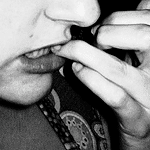I’m brushing up today on creating tension in a scene. There are lots of “tricks” and techniques to get the “tension in every page” Donald Maass recommends. While I don’t really go in for resorting to tricks to create suspense, little techniques can really establish, increase or build the tension within a scene.
Looking for info on rewards per page for your novel? Check out this post on giving readers what they want!
The list:
- Give a character a goal in each scene
- Setbacks to a character’s goal in a scene
- Uncertainty—often from a lack of information
- Worry—plenty of bad information
- Doubt, especially in one’s self (the character, not the writer
)
- Raise the stakes—put more people or a bigger, more valuable objective in danger
- Increase the odds against the character
- Make the characters care more—greater emotional stakes
- Make things more challenging
- Surprise character or event to change things up
- Nonhuman obstacles—setting or weather interfere
- Using the POV of a character that doesn’t know something vital (something we’ve established in another POV)
- End the scene with a foreboding foreshadowing
- Play on a character’s inner anxieties—push them to the limit (and beyond)
- Let the characters blow up—what are the consequences?
- “Minidisaster”—a preview of what could happen in the big disaster, by showing a small version of their impending doom.
- A close call
- A character purposefully withholding info from another
- Jump cutting to another scene/storyline immediately after a disaster
- Make characters’ goals look impossible. Or just make them impossible.
- Stating a chilling fact.
- Danger—dangerous, skillful work.
- Deadlines approaching
- Foreshadowing a coming confrontation
- An unfortunate meeting
- Trapped in a closed environment (perhaps a crucible?)
- Fears coming true
- Set up any of these situations and prolong them, rather than relieving the tension
- Remove characters’ supports
- Disable characters’ strengths
- Undermine characters’ belief systems (not necessarily in a religious sense, but in a “I’m fighting for the greater good—holy crap, what do you mean the victim’s a bad guy?” kind of way)
- Move up the deadline
- Avoid low-tension scenes (sequels, really):
- Thinking (esp while driving between one scene with live action and another)
- Decompressing or cleaning up
- Coffee breaks
- “Aftermath” scenes
- Sometimes, even love scenes—a sex scene releases all the sexual tension you’ve established, so then you have to reestablish that tension with something to keep them apart. Though this can be done well, often, this is where we get the contrived or entirely external conflicts that just aren’t that compelling.
- Leave out the parts people skip
—distill scenes to their essential parts
- Cut small talk (unless you’ve worked hard to establish that the small talk is covering something else, something with a lot of tension, or you’ve got a lot of subtexting)
- Make one character’s scene goal conflict with another’s scene goal
- Make us root for the other guy—make the antagonist a sympathetic character, so we want both sides to win.


Sources: Revision And Self-Editing by James Scott Bell, Stein On Writing by Sol Stein, Writing the Breakout Novel by Donald Maass, and me, of course.
What do you think? What do you do to create or increase tension in a scene? How can you implement these ideas in your work?
Photo credits: nail biter—Cavale Doom; knuckled grip—Alex Schneider
